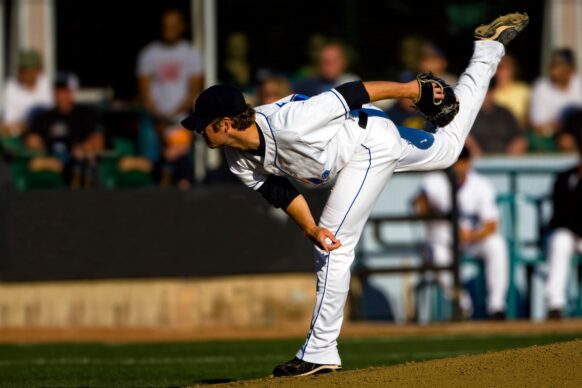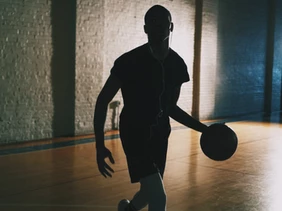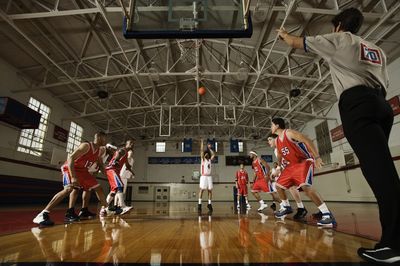Find a Physical Therapy Clinic Near You
Evolution Physical Therapy has clinics across the country ready to redefine what you know about physical therapy. Are you looking for a new physical therapist? Do you need to find someone with the medical expertise to take your physical performance to another level? Navigate the physical therapy clinics below to find the best option in your area.
Explore Our Clinics By Region
Currently, our physical therapy clinics are broken down into three regions: West Coast, East Coast, and Mountain. Click on each to display the locations available. Click each listing to see more information specific to that location.
Mon-Fri: 7:00AM-7:00PM
Sat: 8:00AM-2:00PM
- Bio – Mechanical Assessment W/ Corrective Exercise Prescription
- Blood Flow Restriction Therapy
- Climber-Specific Rehab
- Corporate Wellness
- Deep Tissue/Sports Massage
- Electrical Stimulation
- Instrument Assisted Soft Tissue Mobilization
- Joint Mobilization & Manipulation
- Lacrosse Shot Speed Training
- Manual Therapy
- Medical Massage
- Orthopedic Injury Rehabilitation
- Personal Training
- Post-Concussion Management
- Prenatal Massage
- PT Circuit Classes
- Recovery Boots
- Run Club
- Running Evaluation & Gait Analysis
- Soft Tissue Mobilization & Massage
- Spine Care
- Sport Conditioning
- Strength Training
- Telehealth
- Therapeutic Cupping
- Vestibular Rehabilitation Therapy
- Women’s Health
Mon-Thu: 7:00AM-7:00PM
Fri: 7:00AM-6:00PM
- Bio – Mechanical Assessment W/ Corrective Exercise Prescription
- Blood Flow Restriction Therapy
- Corporate Wellness
- Deep Tissue/Sports Massage
- Electrical Stimulation
- Instrument Assisted Soft Tissue Mobilization
- Joint Mobilization & Manipulation
- Lacrosse Shot Speed Training
- Manual Therapy
- Medical Massage
- Orthopedic Injury Rehabilitation
- Personal Training
- Post-Concussion Management
- Prenatal Massage
- PT Circuit Classes
- Recovery Boots
- Run Club
- Running Evaluation & Gait Analysis
- Soft Tissue Mobilization & Massage
- Spine Care
- Sport Conditioning
- Strength Training
- Telehealth
- Therapeutic Cupping
- Vestibular Rehabilitation Therapy
- Women’s Health
Mon/Wed: 6:30AM-6:00PM
Tue/Thu: 7:00AM-5:00PM
Fri: 6:30AM-3:30PM
- Bio – Mechanical Assessment W/ Corrective Exercise Prescription
- Blood Flow Restriction Therapy
- Boot Camp
- Corporate Wellness
- Deep Tissue/Sports Massage
- Electrical Stimulation
- Instrument Assisted Soft Tissue Mobilization
- Joint Mobilization & Manipulation
- Lacrosse Shot Speed Training
- Manual Therapy
- Medical Massage
- Orthopedic Injury Rehabilitation
- Post-Concussion Management
- Prenatal Massage
- PT Circuit Classes
- Recovery Boots
- Running Evaluation & Gait Analysis
- Soft Tissue Mobilization & Massage
- Spine Care
- Sport Conditioning
- Strength Training
- Surf-Specific Training & Injury Rehab
- Telehealth
- Therapeutic Cupping
- Vestibular Rehabilitation Therapy
Mon-Fri 6am – 7pm
- Bio – Mechanical Assessment W/ Corrective Exercise Prescription
- Blood Flow Restriction Therapy
- Boot Camp
- Cardio
- Corporate Wellness
- Deep Tissue/Sports Massage
- Electrical Stimulation
- Fitness
- Functional Movement Screen
- Instrument Assisted Soft Tissue Mobilization
- Joint Mobilization & Manipulation
- Lacrosse Shot Speed Training
- LSVT BIG for Parkinson’s
- Manual Therapy
- Medical Massage
- Personal Training
- Physical Therapy
- Post-Concussion Management
- Prenatal Massage
- PT Circuit Classes
- Recovery Boots
- Recovery Services
- Return to Sport Testing
- Run Club
- Run Smart
- Soft Tissue Mobilization & Massage
- Spine Care
- Sport Conditioning
- Strength Training
- Swedish Massage
- Telehealth
- Therapeutic Cupping
- Vestibular Rehabilitation Therapy
- Women’s Health
Mon-Fri: 6:00AM-7:00PM
Sat: 8:00AM-2:00PM
- Bio – Mechanical Assessment W/ Corrective Exercise Prescription
- Blood Flow Restriction Therapy
- Boot Camp
- Climber-Specific Rehab
- Corporate Wellness
- Deep Tissue/Sports Massage
- Electrical Stimulation
- Instrument Assisted Soft Tissue Mobilization
- Joint Mobilization & Manipulation
- Lacrosse Shot Speed Training
- LSVT BIG for Parkinson’s
- Manual Therapy
- Medical Massage
- Orthopedic Injury Rehabilitation
- Personal Training
- Post-Concussion Management
- Prenatal Massage
- PT Circuit Classes
- Recovery Boots
- Run Club
- Running Evaluation & Gait Analysis
- Soft Tissue Mobilization & Massage
- Spine Care
- Sport Conditioning
- Strength Training
- Telehealth
- Therapeutic Cupping
- Vestibular Rehabilitation Therapy
- Women’s Health
Mon-Fri: 6:00AM-7:00PM
Sat: 8:00AM-2:00PM
- Bio – Mechanical Assessment W/ Corrective Exercise Prescription
- Blood Flow Restriction Therapy
- Boot Camp
- Climber-Specific Rehab
- Corporate Wellness
- Deep Tissue/Sports Massage
- Electrical Stimulation
- Instrument Assisted Soft Tissue Mobilization
- Joint Mobilization & Manipulation
- Lacrosse Shot Speed Training
- Manual Therapy
- Medical Massage
- Orthopedic Injury Rehabilitation
- Personal Training
- Post-Concussion Management
- Prenatal Massage
- PT Circuit Classes
- Recovery Boots
- Run Club
- Running Evaluation & Gait Analysis
- Soft Tissue Mobilization & Massage
- Spine Care
- Sport Conditioning
- Strength Training
- Telehealth
- Therapeutic Cupping
- Vestibular Rehabilitation Therapy
- Women’s Health
Mon-Thu: 7:00AM-7:00PM
Fri: 7:00AM-6:00PM
- Bio – Mechanical Assessment W/ Corrective Exercise Prescription
- Blood Flow Restriction Therapy
- Corporate Wellness
- Deep Tissue/Sports Massage
- Electrical Stimulation
- Instrument Assisted Soft Tissue Mobilization
- Joint Mobilization & Manipulation
- Lacrosse Shot Speed Training
- Manual Therapy
- Medical Massage
- Orthopedic Injury Rehabilitation
- Personal Training
- Post-Concussion Management
- Prenatal Massage
- PT Circuit Classes
- Recovery Boots
- Run Club
- Running Evaluation & Gait Analysis
- Soft Tissue Mobilization & Massage
- Spine Care
- Sport Conditioning
- Strength Training
- Telehealth
- Therapeutic Cupping
- Vestibular Rehabilitation Therapy
- Women’s Health
Mon/Wed/Thu: 7:00AM-6:00PM
Tue: 7:00AM-7:00PM
Fri: 7:00AM-4:00PM
- Bio – Mechanical Assessment W/ Corrective Exercise Prescription
- Blood Flow Restriction Therapy
- Corporate Wellness
- Deep Tissue/Sports Massage
- Electrical Stimulation
- Instrument Assisted Soft Tissue Mobilization
- Joint Mobilization & Manipulation
- Lacrosse Shot Speed Training
- Manual Therapy
- Medical Massage
- Orthopedic Injury Rehabilitation
- Personal Training
- Post-Concussion Management
- Prenatal Massage
- PT Circuit Classes
- Recovery Boots
- Run Club
- Running Evaluation & Gait Analysis
- Soft Tissue Mobilization & Massage
- Spine Care
- Sport Conditioning
- Strength Training
- Telehealth
- Therapeutic Cupping
- Vestibular Rehabilitation Therapy
- Women’s Health
Mon-Thu: 7:00AM-6:30PM
Fri: 7:00AM-4:00PM
Sat: 8:00AM-2:00PM
- Bio – Mechanical Assessment W/ Corrective Exercise Prescription
- Blood Flow Restriction Therapy
- Boot Camp
- Climber-Specific Rehab
- Corporate Wellness
- Deep Tissue/Sports Massage
- Electrical Stimulation
- Functional Dry Needling
- Instrument Assisted Soft Tissue Mobilization
- Joint Mobilization & Manipulation
- Lacrosse Shot Speed Training
- Manual Therapy
- Medical Massage
- Orthopedic Injury Rehabilitation
- Pedal Fit
- Personal Training
- Post-Concussion Management
- Prenatal Massage
- PT Circuit Classes
- Recovery Boots
- Run Club
- Run Smart
- Running Evaluation & Gait Analysis
- Soft Tissue Mobilization & Massage
- Spine Care
- Sport Conditioning
- Strength Training
- Telehealth
- Therapeutic Cupping
- Vestibular Rehabilitation Therapy
- Wintervention
- Women’s Health
Mon-Thu: 7:00AM-7:20PM
Fri: 7:00AM-4:20PM
- Bio – Mechanical Assessment W/ Corrective Exercise Prescription
- Blood Flow Restriction Therapy
- Boot Camp
- Climber-Specific Rehab
- Corporate Wellness
- Deep Tissue/Sports Massage
- Electrical Stimulation
- Functional Dry Needling
- Instrument Assisted Soft Tissue Mobilization
- Joint Mobilization & Manipulation
- Lacrosse Shot Speed Training
- Manual Therapy
- Medical Massage
- Orthopedic Injury Rehabilitation
- Pedal Fit
- Personal Training
- Prenatal Massage
- PT Circuit Classes
- Recovery Boots
- Run Club
- Run Smart
- Running Evaluation & Gait Analysis
- Soft Tissue Mobilization & Massage
- Spine Care
- Sport Conditioning
- Strength Training
- Telehealth
- Therapeutic Cupping
- Vestibular Rehabilitation Therapy
- Wintervention
Monday-Friday: 7:00AM-7:00PM
- Bio – Mechanical Assessment W/ Corrective Exercise Prescription
- Blood Flow Restriction Therapy
- Boot Camp
- Climber-Specific Rehab
- Corporate Wellness
- Deep Tissue/Sports Massage
- Electrical Stimulation
- Functional Dry Needling
- Instrument Assisted Soft Tissue Mobilization
- Joint Mobilization & Manipulation
- Lacrosse Shot Speed Training
- Manual Therapy
- Medical Massage
- Orthopedic Injury Rehabilitation
- Pedal Fit
- Personal Training
- Post-Concussion Management
- Prenatal Massage
- PT Circuit Classes
- Recovery Boots
- Run Club
- Run Smart
- Running Evaluation & Gait Analysis
- Soft Tissue Mobilization & Massage
- Spine Care
- Sport Conditioning
- Strength Training
- Telehealth
- Therapeutic Cupping
- Vestibular Rehabilitation Therapy
- Wintervention
- Women’s Health
Mon: 8:00AM-3:00PM
Tues: 10:00AM-7:00PM
Wed: 7:00AM-3:00PM
Thurs: 10:00AM-7:00PM
- Bio – Mechanical Assessment W/ Corrective Exercise Prescription
- Blood Flow Restriction Therapy
- Boot Camp
- Corporate Wellness
- Deep Tissue/Sports Massage
- Electrical Stimulation
- Functional Dry Needling
- Instrument Assisted Soft Tissue Mobilization
- Joint Mobilization & Manipulation
- Lacrosse Shot Speed Training
- Manual Therapy
- Medical Massage
- Orthopedic Injury Rehabilitation
- Pedal Fit
- Personal Training
- Prenatal Massage
- PT Circuit Classes
- Recovery Boots
- Run Smart
- Running Evaluation & Gait Analysis
- Soft Tissue Mobilization & Massage
- Spine Care
- Sport Conditioning
- Strength Training
- Telehealth
- Therapeutic Cupping
- Vestibular Rehabilitation Therapy
- Wintervention
Mon-Fri: 7:00AM-7:00PM
- Bio – Mechanical Assessment W/ Corrective Exercise Prescription
- Blood Flow Restriction Therapy
- Boot Camp
- Corporate Wellness
- Deep Tissue/Sports Massage
- Electrical Stimulation
- Functional Dry Needling
- Instrument Assisted Soft Tissue Mobilization
- Joint Mobilization & Manipulation
- Lacrosse Shot Speed Training
- LSVT BIG for Parkinson’s
- Manual Therapy
- Medical Massage
- Orthopedic Injury Rehabilitation
- Personal Training
- Prenatal Massage
- PT Circuit Classes
- Recovery Boots
- Run Club
- Running Evaluation & Gait Analysis
- Soft Tissue Mobilization & Massage
- Spine Care
- Sport Conditioning
- Strength Training
- Telehealth
- Therapeutic Cupping
- Vestibular Rehabilitation Therapy
- Youth Training (Boot Camp)
Mon-Fri: 7:00AM-7:00PM
- Electrical Stimulation
- Joint Mobilization & Manipulation
- Personal Training
- Prenatal Massage
- Recovery Boots
- Run Club
- Running Evaluation & Gait Analysis
- Soft Tissue Mobilization & Massage
- Spine Care
- Sport Conditioning
- Strength Training
- Supplement Store
- Telehealth
- Therapeutic Cupping
- Vestibular Rehabilitation Therapy
Mon/Wed/Fri: 5:00AM-6:00PM
Tue: 10:30AM-7:00PM
Thu: 5:00AM-7:00PM
- Bio – Mechanical Assessment W/ Corrective Exercise Prescription
- Blood Flow Restriction Therapy
- Boot Camp
- Corporate Wellness
- Deep Tissue/Sports Massage
- Electrical Stimulation
- Functional Dry Needling
- Instrument Assisted Soft Tissue Mobilization
- Joint Mobilization & Manipulation
- Lacrosse Shot Speed Training
- LSVT BIG for Parkinson’s
- Manual Therapy
- Medical Massage
- Orthopedic Injury Rehabilitation
- Personal Training
- PT Circuit Classes
- Recovery Boots
- Running Evaluation & Gait Analysis
- Soft Tissue Mobilization & Massage
- Spine Care
- Sport Conditioning
- Strength Training
- Telehealth
- Therapeutic Cupping
- Vestibular Rehabilitation Therapy
- Youth Training (Boot Camp)
Mon, Tue, Thu: 10:20AM-7:00PM
- Bio – Mechanical Assessment W/ Corrective Exercise Prescription
- Blood Flow Restriction Therapy
- Boot Camp
- Corporate Wellness
- Deep Tissue/Sports Massage
- Electrical Stimulation
- Functional Dry Needling
- Instrument Assisted Soft Tissue Mobilization
- Joint Mobilization & Manipulation
- Lacrosse Shot Speed Training
- LSVT BIG for Parkinson’s
- Manual Therapy
- Medical Massage
- Orthopedic Injury Rehabilitation
- Personal Training
- Prenatal Massage
- PT Circuit Classes
- Recovery Boots
- Running Evaluation & Gait Analysis
- Soft Tissue Mobilization & Massage
- Spine Care
- Sport Conditioning
- Strength Training
- Telehealth
- Therapeutic Cupping
- Vestibular Rehabilitation Therapy
- Youth Training (Boot Camp)

About Evolution Physical Therapy
Evolution Physical Therapy was founded under the premise that physical therapy had not yet reached its pinnacle. Our team believes that physical therapy should be engaging, motivating, life-changing, and never boring. We want the people who work with us to find the best version of themselves, regardless of rehabilitation needs or conditions that might initially bring you to our doorstep. And so we continue to strive towards this goal daily. Always improving, and always refining.
What are you seeking from physical therapy? Contact your local Evolution today to discuss injuries, conditions, treatment needed, and fitness goals.
Our Services
Evolution Physical Therapy is composed of physical therapists with various motivations, passions, certifications and skill sets. As such, you’ll find that our service offerings change, depending on location. If you are interested in a specific service or seek guidance on accomplishing a specific goal, don’t hesitate to contact us.

Physical Therapy
We combine the latest techniques and philosophies to Physical Therapy with tried and true treatments to ensure the best outcome for our patients.

Fitness
Our doctors of physical therapy combine our knowledge of the human body with cutting edge methods and technology to help you break through performance barriers.
Featured Services
- Personal Training
- Manual Therapy
- PT Circuit Classes
- Blood Flow Restriction Therapy
- Therapeutic Cupping










































